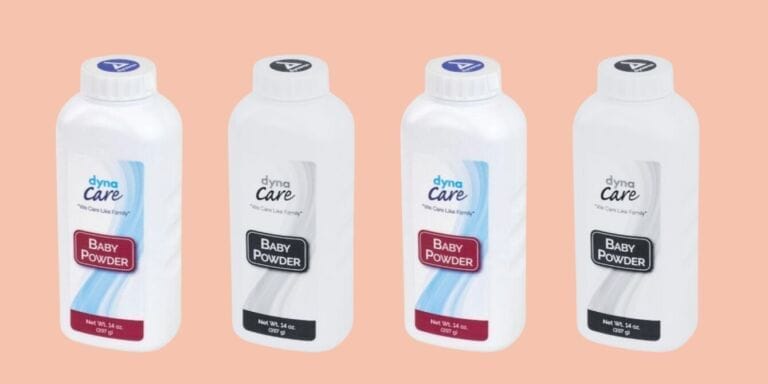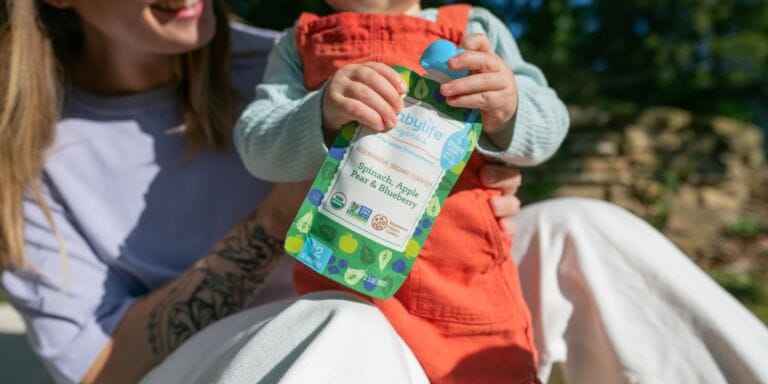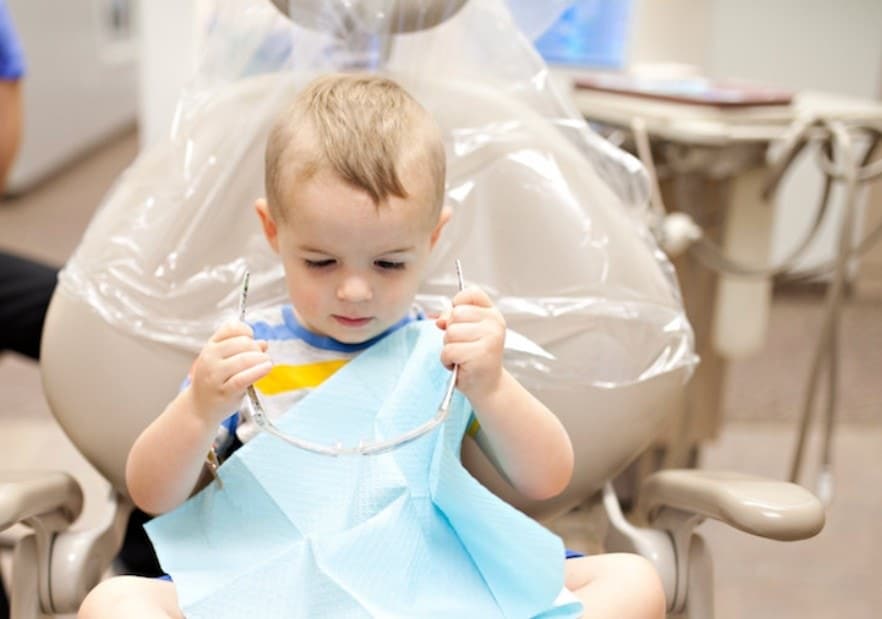Baby skin care questions answered by a pediatric dermatologist: Eczema, acne, & more

Photo Credit: Canva / Motherly
Eczema, acne, breakouts—oh my!
Table of Contents
Babies have a reputation for having the softest, most huggable skin around. That can certainly be true. But, it’s also true that little ones’ skin can be prone to rashes, eczema, acne and more.
“Newborn skin is inherently much more sensitive because it is thinner than adult skin and has lower lipid expression,” says Sheilagh Maguiness, MD, a pediatric dermatologist. The maturation process can take up to two years, during which time Maguiness explains babies are more vulnerable to skin irritation from chemicals and ingredients.
Your job during this time is to learn how to treat common skin issues and minimize potential irritants—and we can help on both fronts. To help educate parents to care for their babies’ skin, Maguiness answered our FAQs on everything from skin flare-ups to sunscreen to best practices for bath time.
Related: 11 natural baby skin care products we can’t get enough of
Here are Maguiness’s tips for showing your baby’s skin the loving care it deserves.
Common baby skin issues and how to treat them
Which skin issues typically resolve on their own or can be treated at home?
- Several common rashes: Erythema toxicum neonatorum and transient pustular melanosis are two harmless conditions. They tend to occur in the first hours or days after birth and show up as hive-like pink bumps or hyperpigmented spots with small pustules. These eruptions typically self-resolve and do not require treatment.
- Baby acne: This can show up between two and three weeks of age. This is usually seen on the head and neck as small pink bumps or pustules with some scaling. Baby acne is not true acne because there are no blackheads and it does not result in scarring. Baby acne is actually a reaction to malassezia yeast on the skin and it’s usually mild. However, if it is more extensive or lasts longer than two months, you should see your doctor as there are treatments that can help.
- Cradle cap: Usually this presents as adherent yellowish scaling on the baby’s scalp. Bathing your child regularly and applying an oil (like sunflower oil) to moisturize the scale and encourage desquamation is helpful. Again, it’s usually transient, but if more severe, red or associated with any oozing or weeping, see your doctor as that might be a sign of bacterial infection or early eczema.
What are signs you should contact a doctor about a baby’s skin issues?
If you think your infant’s rash is lasting longer than it should, or if there is redness, blisters, oozing or weeping please see your doctor. In addition, any widespread or extensive rash that seems itchy or uncomfortable should be seen by your doctor.
Common baby skin issues and how to treat them?
For infants prone to eczema, pediatric dermatologists usually recommend the following:
1. Frequent bathing of infants, daily or every other day, with non-detergent gentle liquid cleansers that are hypoallergenic and fragrance-free.
2. Follow that with an application of a fragrance-free and hypoallergenic lotion from head to toe.
This process is what we refer to as “soak and smear” and it is a great technique to help lock water in the babies’ skin, preventing surface water loss.
What is contact dermatitis?
Contact dermatitis is the presence of inflammation in the babies’ skin caused by an irritant or a true allergen. It shows up as red, sometimes scaly, itchy patches on the skin. The most common areas that irritant or allergic contact dermatitis occurs in babies are the face and diaper area. There are many things that can lead to irritation, including chemicals, preservatives, fragrances, essential oils and just plain old urine and stool.
Is there a link between skin issues and food allergies?
The last five to 10 years have brought about major advances in how we understand all allergic diseases. It turns out that a structural defect in the skin barrier is one of the primary reasons that babies develop both atopic dermatitis and food allergies. A baby’s skin barrier is extremely important! It needs to be well hydrated and free of inflammation to function properly–so it can keep out allergens and microbes. When the baby’s skin barrier isn’t perfect, it can let these things in.
When infants are predisposed to eczema because they have an impaired skin barrier, they can become sensitized to foods through the skin, which leads to increased food allergies. Talk to your pediatrician about early food introduction at 4 months of age, it’s the recommended way to help reduce food allergies in babies.
Baby skincare recommendations

What types of products do you suggest for sensitive skin?
I recommend keeping things very simple. Always opt for products that are gentle, fragrance-free and hypoallergenic.
If your child has dry, sensitive skin that is prone to eczema, you should use a gentle laundry soap that is fragrance-free. I also recommend skipping dryer sheets and fabric softeners for most babies, especially those with more sensitive skin. Cotton clothing is gentle and breathable, while synthetic fabrics and wool may lead to overheating or cause more friction, which can make babies itchy.
Skincare ingredients to avoid for babies with sensitive skin
I feel strongly that fragrance-free products are best. In addition, I’d recommend steering clear of sulfates, essential oils, parabens and alcohols. With respect to baby cleansers, these contain surfactants, which are the foaming/soap ingredient of any baby wash. There are certain surfactants that are gentle and some that are harsher. I would recommend avoiding baby washes where the first ingredient is cocamidopropyl betaine, which is a harsher surfactant that can lead to dryness or even allergic contact dermatitis.
What should parents look for when shopping for sunscreen?
There are many sunscreen ingredients ranging from chemical to mineral-based. For young children, I recommend sticking to mineral-based sunscreens, such as those with zinc oxide or titanium dioxide as the active ingredients.
Most spray or aerosol sunscreens contain primarily chemical sunscreens, so these should be avoided in babies. Sticking to fragrance-free and hypoallergenic sunscreens is also recommended, there are many great options available in creams, lotions and sticks all safe for infants and toddlers.
But, don’t forget, sunscreen application is just one component of sun safety. Sun protective clothing is really important, so get those broad-brimmed hats and rash guards out if you’re headed to the beach. Seek shade and avoid exposure when the UV index is high.
Tips for bath time

How often should you bathe your baby?
Even for babies with sensitive skin, I recommend frequent tub-bathing. Daily to every other day is fine, as long as you apply a moisturizer head to toe right after bathing to seal in all that water. Remember, you don’t need a cleanser every time. Even plain water will still clean your baby!
Studies have shown that frequent bathing and using a hypoallergenic baby moisturizer can help reduce symptoms of baby eczema and improve sensitive skin health. I also find this very helpful for preventing and treating cradle cap and baby acne.
How long should you do bath time for your baby?
Five to 10 minutes is ideal for a soaking tub bath. The most important way to prevent babies’ skin from drying out after the bath is to put a moisturizer on head to toe right after the bath while the skin is still wet, to lock in moisture and prevent surface water loss. Using a gentle, hypoallergenic cleanser is also important, or skipping the cleanser altogether if your child has very dry skin.
How often should you wash your baby’s hair?
A few times a week is usually enough with respect to washing your baby’s hair. Still, make sure you don’t ignore the scalp during regular bath time! Getting the scalp wet will encourage natural desquamation and is helpful for preventing cradle cap, particularly if you moisturize the scalp afterward with an oil, like sunflower oil.
When should you put lotion or diaper rash cream on your baby?
Right after bathing is the best time to apply a moisturizing cream or ointment. I recommend applying a moisturizer to your baby’s skin right after you pat them dry while the skin is still damp. This helps to seal in that moisture and once again, acts to prevent water loss from the skin’s surface.
I also recommend applying a diaper barrier with every diaper change. I like ointments such as plain petrolatum, but some diaper creams containing zinc oxide can be helpful too, as long as they do not contain fragrance.
FAQs
Q: How can I prevent diaper rash?
A: Change your baby’s diaper frequently, use a barrier cream with each change, and let the skin air dry when possible.
Q: What’s the best lotion for baby eczema?
A: Use thick, fragrance-free, and hypoallergenic creams like Aquaphor, CeraVe, or Eucerin to lock in moisture.
Q: How can I soothe my baby’s itchy skin from eczema?
A: Apply a gentle, fragrance-free moisturizer regularly and use oatmeal baths or baking soda baths for relief.
Q: Can I use baby wipes for my baby’s sensitive skin?
A: Opt for fragrance-free, alcohol-free wipes or use a soft cloth with water to avoid irritation.
Q: How can I treat cradle cap?
A: Apply a gentle oil like sunflower oil to loosen the scales, then wash with a mild shampoo.
Q. What should I do if my baby has a sunburn?
A: Move your baby to the shade and apply a gentle, fragrance-free moisturizer. If severe, consult your pediatrician.





































